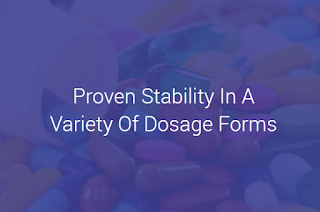How does Strain differ from Species?
The major difference between strain and species is that a strain is a genetic variant. It is also a subtype or culture of a biological species. However, species is the largest group of organisms, and any two individuals of the appropriate sexes or mating types can produce fertile offspring, typically by reproduction. Several strains can also occur while species is the basic unit of classification or organisms and a unit of biodiversity.
Strain development and species are the two units of classification of a living organism. Their usage might vary depending on the situation.
What is a Strain?
A strain is a genetic variant, subtype, or culture of biological species. They are also used more popularly in microbiology. Furthermore, a strain originates from a single-cell colony, and microorganisms, such as viruses, bacteria, and fungi, have several strains within the species. For example, a “flu strain” is also a certain biological form of influenza or “flu” virus characterized by their differing isoforms of surface proteins. Thereby, a strain also carries a particular genetic characteristic that doesn’t occur in the other members of the species.
Besides genetics, there is a variation of genomes between individuals in the same species of genetic mutations that occurs during sexual reproduction. Genetic variation can be caused because of mutations of genes, gene flow, random fertilization, random mating, and crossing over between homologous chromosomes. Strain development is also an important mechanism that forces evolution through natural selection. It is also important to maintain biodiversity among species.
What is a Species?
A species is a related group of organisms with similar characteristics and interbreed that can produce fertile offspring. It is also the fundamental unit of the classification of organisms. To define a particular species, there are similarities in the DNA sequences, morphological, and ecological features that can be considered. Historically, Charles Darwin describes the origin of species by natural selection in 1859. Sometimes, a particular species might also consist of different breeds with great variations. Often, similar species live in similar habitats since they originated from a common ancestor.
However, many defining species might become difficult due to variations within the species. Species are taxonomic level of organisms which rank below a genus. Although it consists of similar individuals, a species comprises the biggest possible gene pool. Genes can also be transferred between species by horizontal transfer.
Difference between Strain and Species
Definition: A strain refers to a genetic variant or even a subtype of a biological species. But species refer to a group of organisms that can reproduce with one another in nature and produce fertile offspring.
Correspondence: A strain is a subtype of species, but species is the basic taxonomic group of classification of organisms.
Genetics: A strain is an isolate of a given species that has specific genetic characteristics, while organisms in the species have a genetic similarity that is sufficient for mating, and producing offspring.
Identification: A strain can also be characterized by serotyping, functional traits, enzyme type, protein plasmid characterization, etc. However, species can be characterized by their genetic, and biochemical phenotypic criteria.
Do you know that our body has 500 different types of probiotic strains, and the lack of diversity in them can be linked to obesity, digestive, and other health issues? Let's see how we can cure them. Have you heard of strain development? In simple terms, strain development is all about improving an organism's genetics so that it can effectively and successfully carry out the biotechnological process. Another definition of strain development is manipulating and improving microbial strains, which can enhance metabolism in humans. With Strain development, it is possible to achieve the following things:
Rapid growth
Genetic stability
Eliminating the production of compounds that can interfere with downstream processing
Non-toxicity to humans
Improved use of Carbon and Nitrogen sources.
Reduction in cost of cultivation
Production of additional enzymes and compounds to inhibit contaminants of microorganisms
Reduction in fermentation time
Probiotic bacillus clausii is mostly utilized for treating & preventing diarrhea which is also caused by the use of antibiotics and infections. It is also used for general digestion problems, irritable bowel syndrome (IBS), inflammatory bowel syndrome, and bacterial overgrowth.
Probiotics contain several Bacillus species. These species have been used in consumption and in varieties of formulations that are available worldwide. Some Bacillus species including Bacillus subtilis, Bacillus clausii, Bacillus cereus, Bacillus coagulans, and Bacillus licheniformis are commonly used by humans.
Here are the benefits of Probiotic saccharomyces boulardii
Some research has shown that Saccharomyces boulardii in children can reduce severe illness.
Some research has shown that taking Saccharomyces boulardii helps in the treatment of acne.
Taking Saccharomyces boulardii with antibiotics can help to prevent Clostridium difficile-associated diarrhea from recurring in people.
Taking Saccharomyces boulardii along with standard H. pylori can help in treating digestive tract infection.
According to probiotics manufacturers, numerous health benefits are linked to consuming probiotics. However, many related side effects can affect a percentage of the population. Let us check out some of the side effects of using probiotics:
Probiotics can cause unpleasant digestive symptoms
Probiotic foods can sometimes trigger headaches
Probiotics can increase infection risk
Probiotic strains can increase histamine levels



Comments
Post a Comment